

Construindo seu próprio amplificador
III
1) Coletânea de circuitos clássicos apresentados por Rainer Zur Linden em seu livro
“Build your Own Audio Valve Amplifiers”
2) pré-amplificadores e unidades de saída de
“Elektronik-Selbstbauprojekte Forum”
3) pré-amplificadores e unidades de saída em
“DIY Paradise”

xxxxxxxxxxxxxxxxxxxxxxxxxxxxxxxxxxxxxxxxxxxxxxx
xxxxxxxxxxxxxxxxxxxxxxxxxxxxxxxxxxxxxxxxxxxxxxx
-1B-
fontes reguladas e pré-amplificadores
D- All Purpose Preamplifier Circuits

CD/Line amplifier
Line preamplifier and Power supply

xxxxxxxxxxxxxxxxxxxxxxxxxxxxxxxxxxxxxxxxxxxxxxx



Pick-up/line Amplifier with SRPP output
Line Preamplifier two versions and Power supply
xxxxxxxxxxxxxxxxxxxxxxxxxxxxxxxxxxxxxxxxxxxxxxx

Quality RIAA preamplifier (Use 300V Supply)
xxxxxxxxxxxxxxxxxxxxxxxxxxxxxxxxxxxxxxxxxxxxxxx

Quality RIAA preamplifier using single ECC83 (Use 300V Supply)
xxxxxxxxxxxxxxxxxxxxxxxxxxxxxxxxxxxxxxxxxxxxxxx
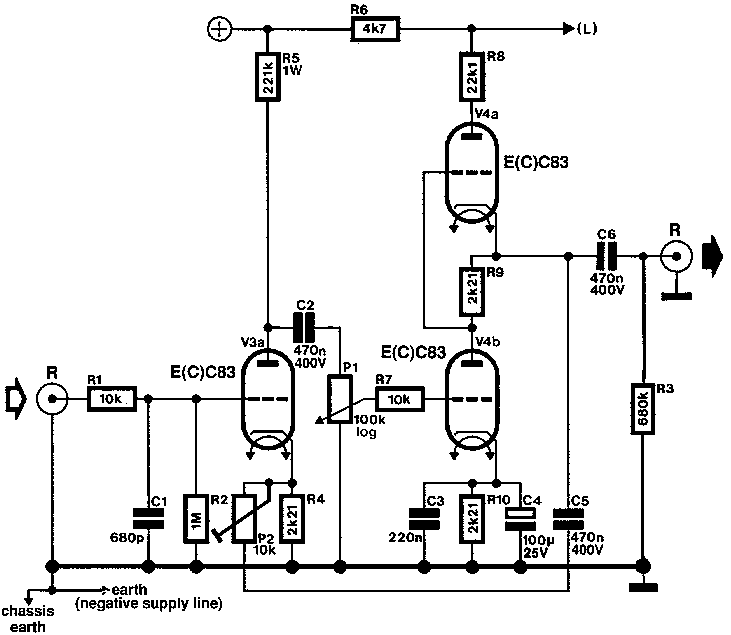
Quality Line preamplifier (Use 300V Supply)

Tone control with ECL86 (Use 300V Supply)
xxxxxxxxxxxxxxxxxxxxxxxxxxxxxxxxxxxxxxxxxxxxxxx
xxxxxxxxxxxxxxxxxxxxxxxxxxxxxxxxxxxxxxxxxxxxxxx
E- Regulated power supply for preamplifiers and amplifiers

regulated power supply for preamplifiers
xxxxxxxxxxxxxxxxxxxxxxxxxxxxxxxxxxxxxxxxxxxxxxx

Medium current SS regulated power supply I
xxxxxxxxxxxxxxxxxxxxxxxxxxxxxxxxxxxxxxxxxxxxxxx

Medium current SS regulated power supply II
xxxxxxxxxxxxxxxxxxxxxxxxxxxxxxxxxxxxxxxxxxxxxxx

High current (150ma) regulated power supply and second stage allowing two independent positive voltages
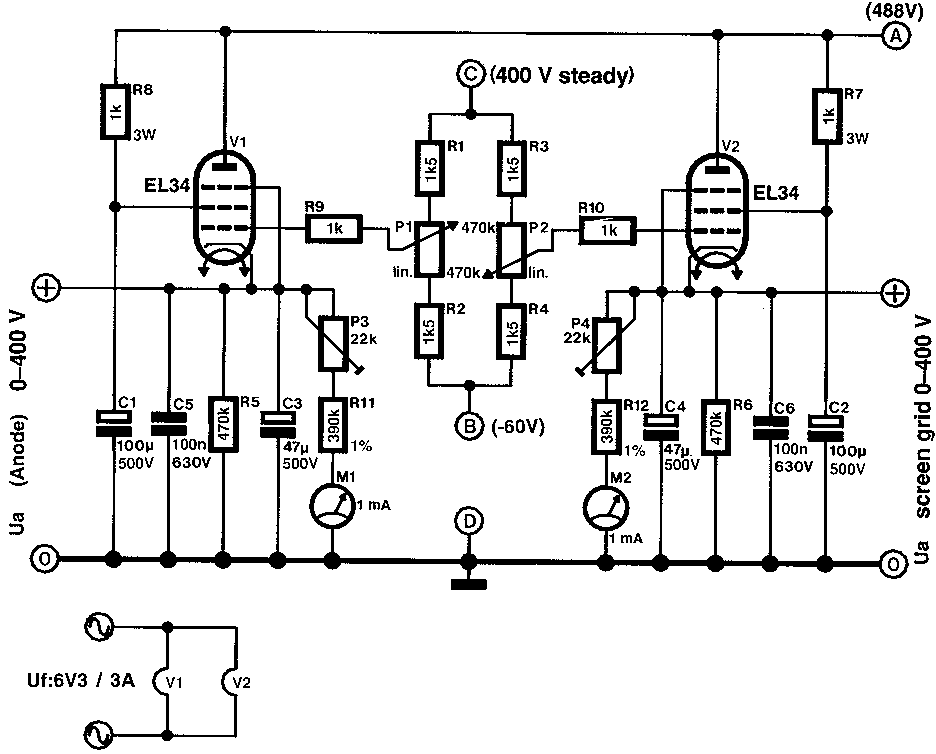
second additional stage
xxxxxxxxxxxxxxxxxxxxxxxxxxxxxxxxxxxxxxxxxxxxxxx
xxxxxxxxxxxxxxxxxxxxxxxxxxxxxxxxxxxxxxxxxxxxxxx
-2-
Elektronik-Selbstbauprojekte Forum
Small Signal Preamplifiers

Stereo Preamplifier with Equilibrium Tone Control and Loudness with two ECC83 (Use 250V Supply)
xxxxxxxxxxxxxxxxxxxxxxxxxxxxxxxxxxxxxxxxxxxxxxx


Quality RIAA preamplifier using single ECC808 (Use 300V Supply)
xxxxxxxxxxxxxxxxxxxxxxxxxxxxxxxxxxxxxxxxxxxxxxx

Zero Headphone Amplifier with simmetrical feed and output transformerless
xxxxxxxxxxxxxxxxxxxxxxxxxxxxxxxxxxxxxxxxxxxxxxx
xxxxxxxxxxxxxxxxxxxxxxxxxxxxxxxxxxxxxxxxxxxxxxx
-3-
Schematics from DIY Paradise
Used preamplifier valves: transconductance x amplifying factor
|
12B4… |
mA/V= 6,300 |
x 6.5 |
|
5687… |
mA/V= 11,500 |
x 17 |
|
5842… |
mA/V= 27,000 |
x 43 |
|
5965… |
mA/V= 6,500 |
x 47 |
Very simple one-tube per channel linestage. Two versions:
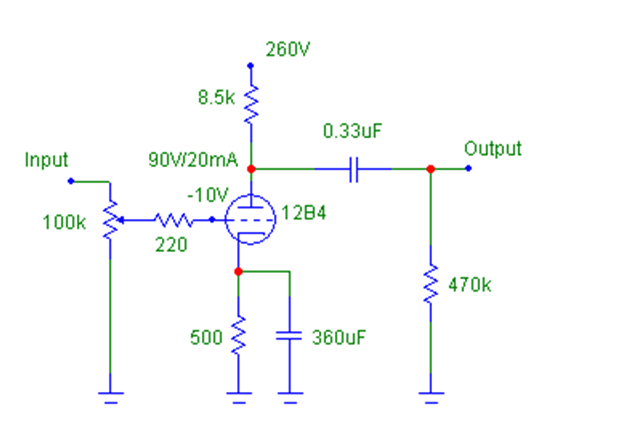
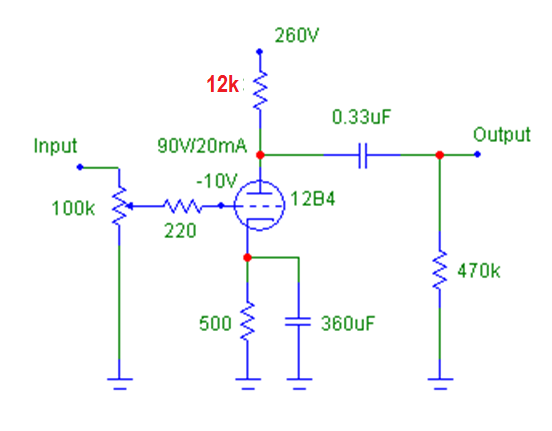
Here is Audio Note's M7 preamp.
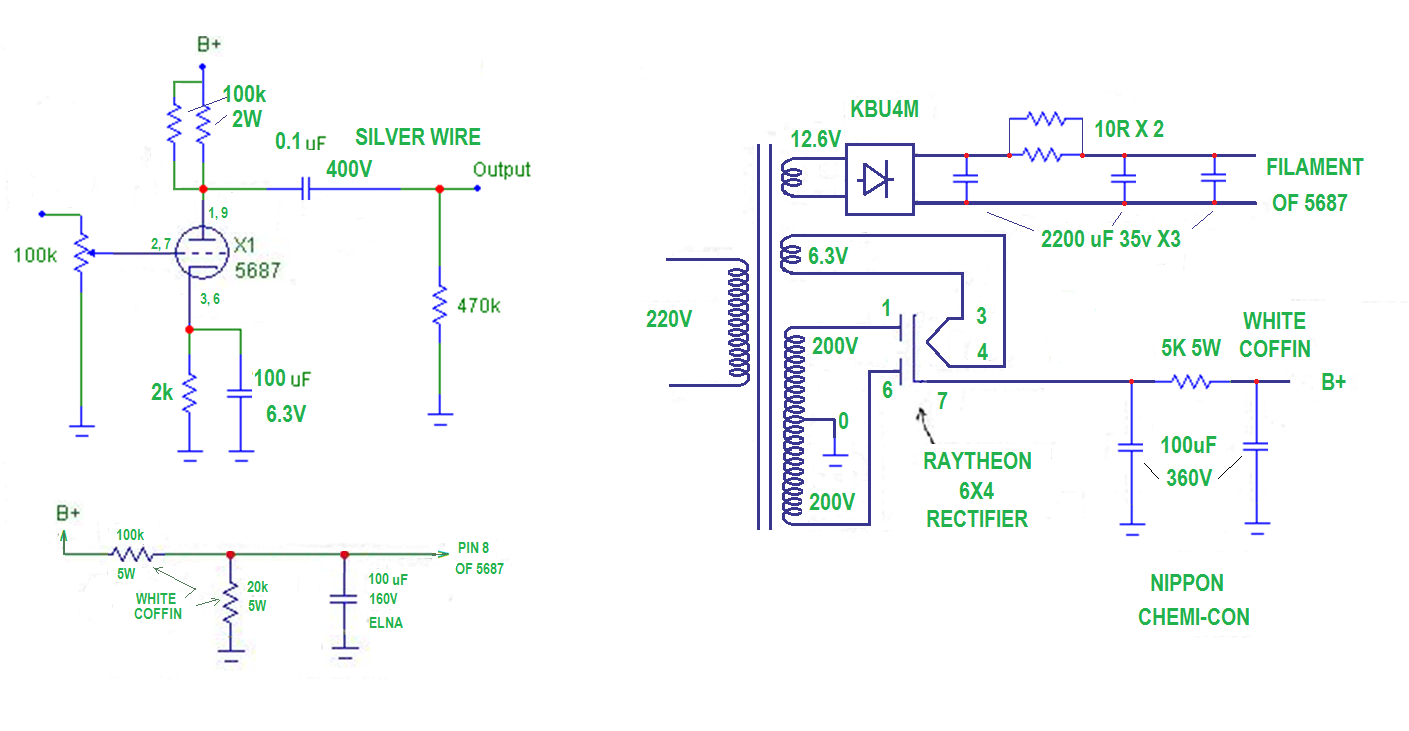
Here is vt4c's M7 preamp.
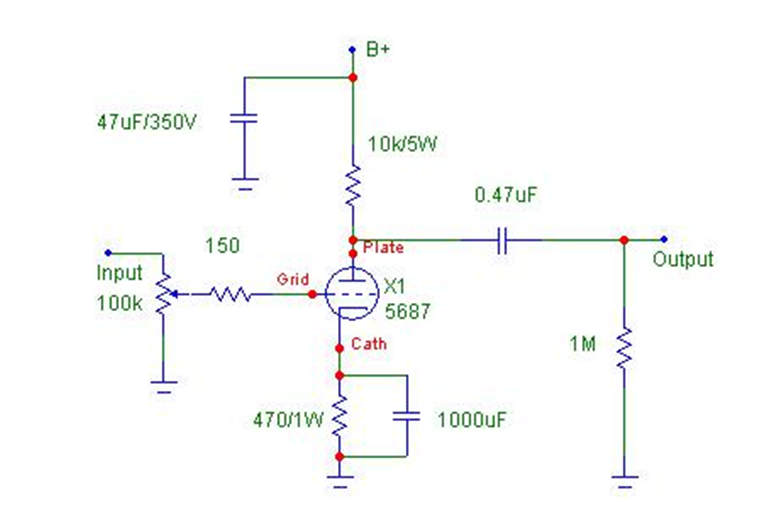
As simple as it gets!
xxxxxxxxxxxxxxxxxxxxxxxxxxxxxxxxxxxxxxxxxxxxxxx
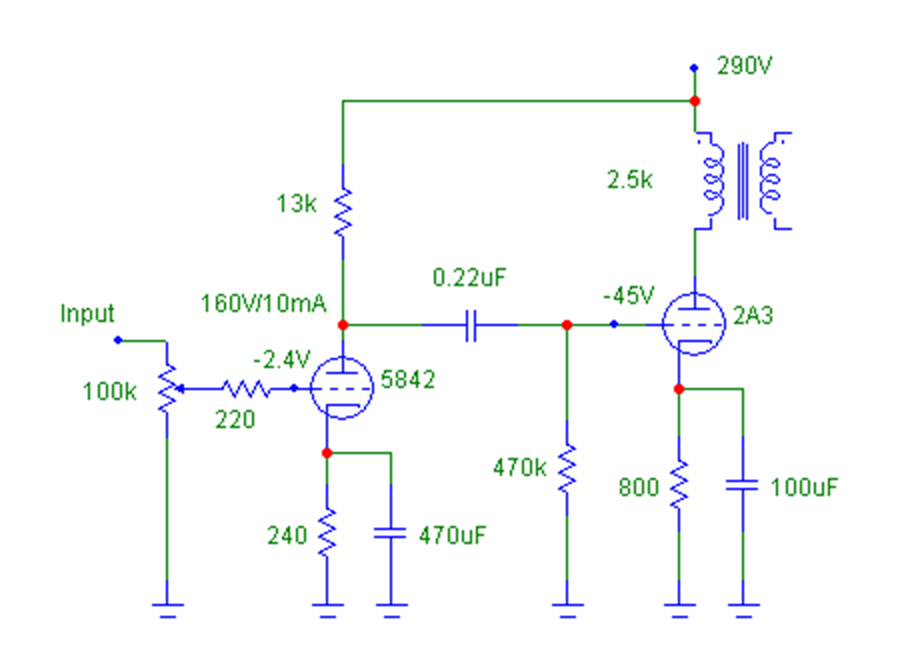
This is adapted from Thosten Loesch's Full Monkey featuring the 5842 driving a 300B.
The simplicity and use of so few components is really inviting. Very very tempted to build... Beware though, unlike most tube designs, component values here is quite "tight" and may need some fine-tuning.
xxxxxxxxxxxxxxxxxxxxxxxxxxxxxxxxxxxxxxxxxxxxxxx
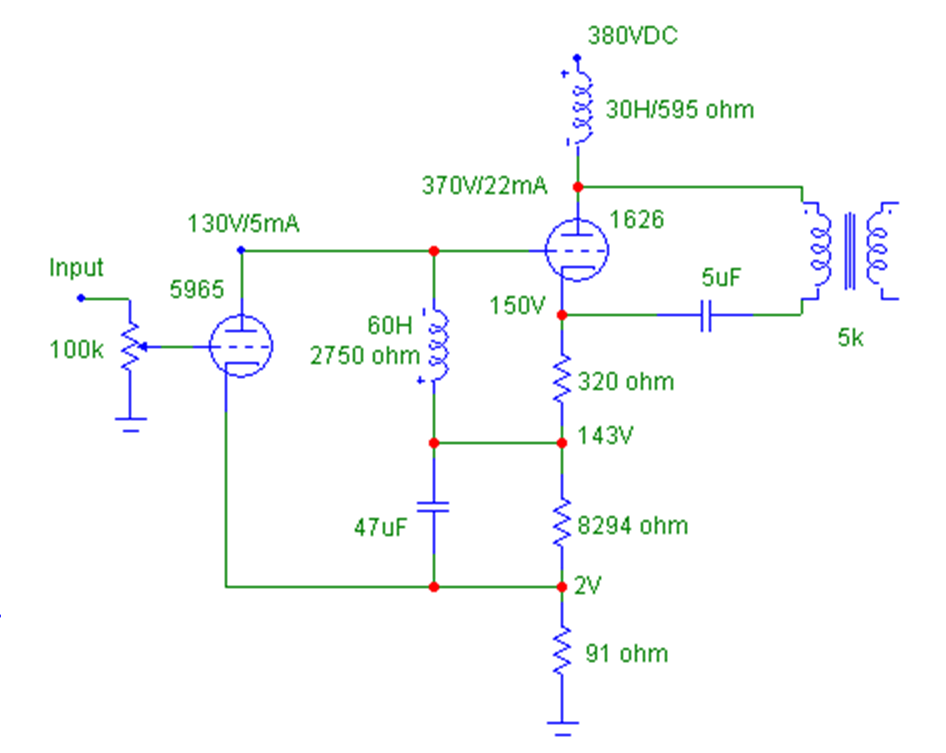
"Ultrapath choke-loaded driver stage, direct reactance/'Free Lunched', direct-coupled to output tube which is 'Monkeyed', 'Ultrapathed' and 'Parafed'."
xxxxxxxxxxxxxxxxxxxxxxxxxxxxxxxxxxxxxxxxxxxxxxx
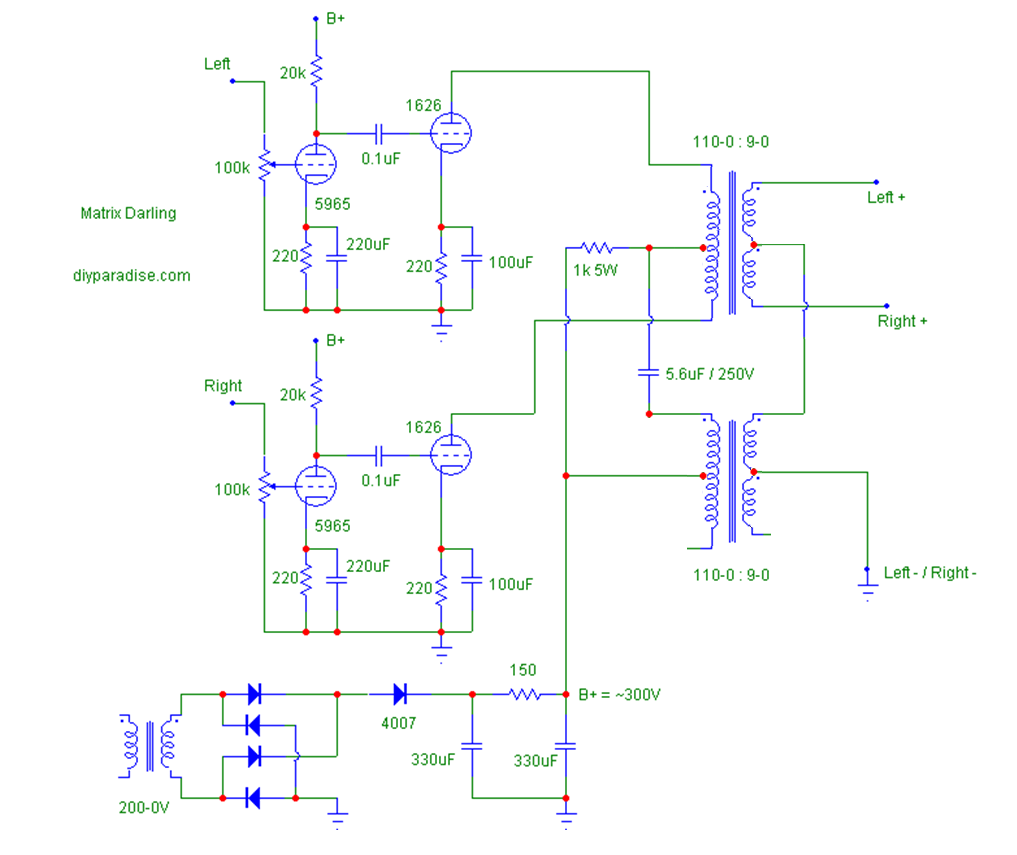
Note that the output stage consists of 2 toroidal power trans. The top 2 drawn trans are actually from one trans. Ditto the bottom 2.
If you find the Matrix topology hard to understand, look at this simplified version.
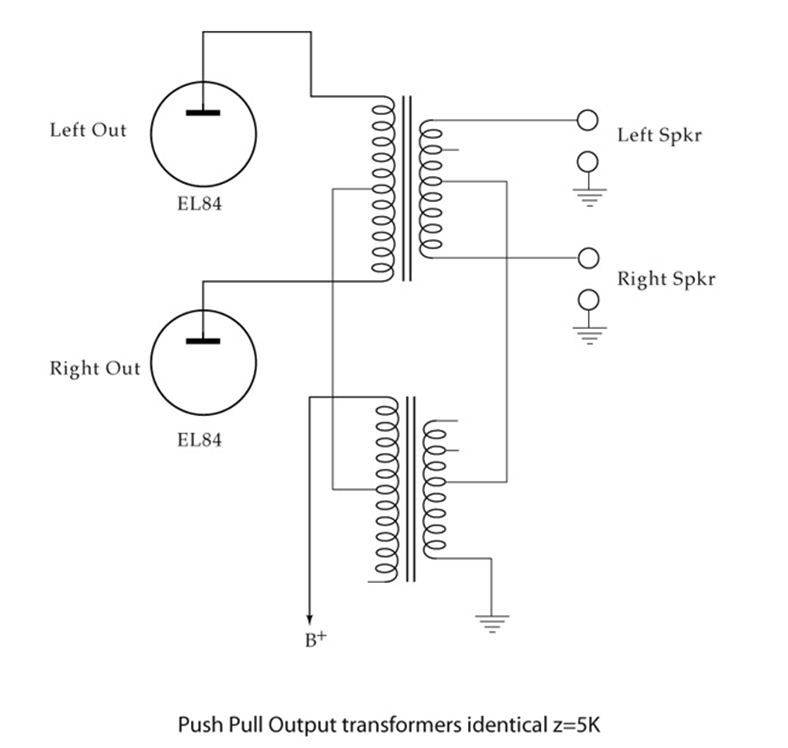
Schematics from DIY Paradise
xxxxxxxxxxxxxxxxxxxxxxxxxxxxxxxxxxxxxxxxxxxxxxx
|
|
|
|
![]() HIS
PHONO PREAMPLIFIER for magnetic pick-up
cartridge (of vinyl record player/turntable) is my 'slightly improved' version
of a design by Robert Danielak – for the original see his web page
Bob's Vacuum Tube Phono Preamp – so I do not claim any originality for it. It is, however, the
best sounding phono preamp, valve or otherwise,
HIS
PHONO PREAMPLIFIER for magnetic pick-up
cartridge (of vinyl record player/turntable) is my 'slightly improved' version
of a design by Robert Danielak – for the original see his web page
Bob's Vacuum Tube Phono Preamp – so I do not claim any originality for it. It is, however, the
best sounding phono preamp, valve or otherwise,
I've heard that I can remember, and is
what I am now using in my own system...
The design has the following main features:
A. The use of Octal instead of miniature (Noval) valves (with benefits beside that of simply avoiding the over-heating problems of miniature types, see later);
B. Parallel-twin triode input stage for low noise;
C. Passive RIAA equalisation, but which is split into two separate networks, each handling a separate part of the spectrum;
D. b No following grid bias resistor to shunt the primary network in parallel, which in my experience severely compromises the low-frequency response;
E. Not least, elegant simplicity, with only two capacitors in the signal path.
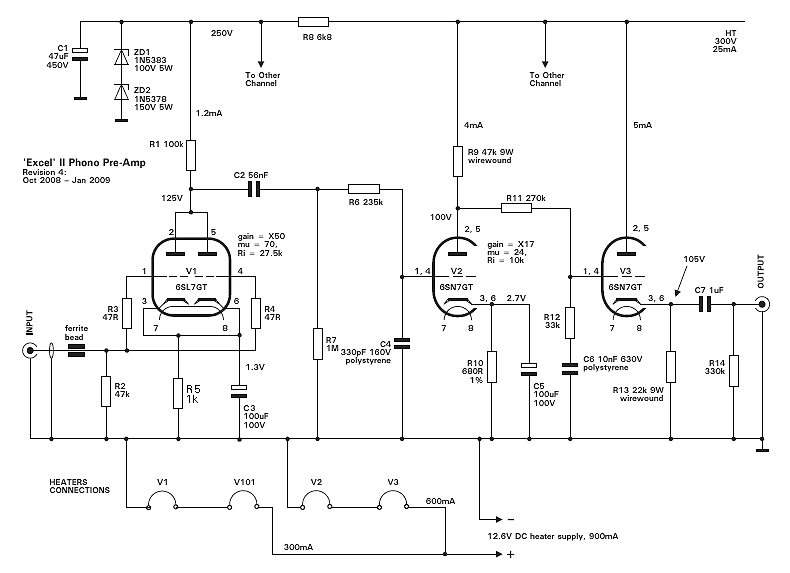
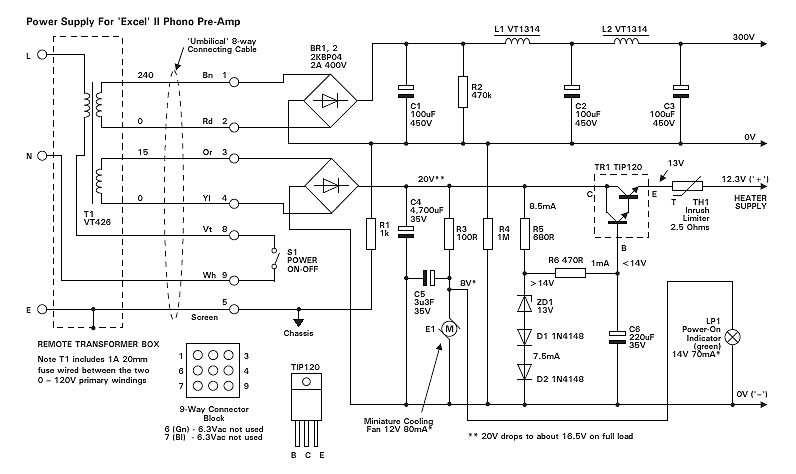
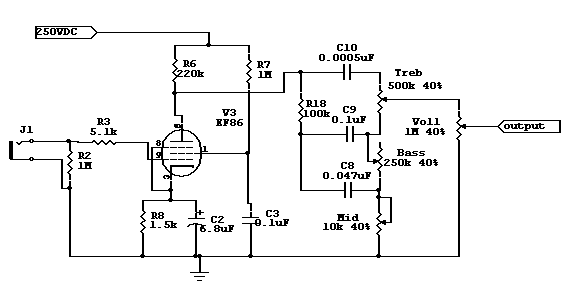
Full Tone Control
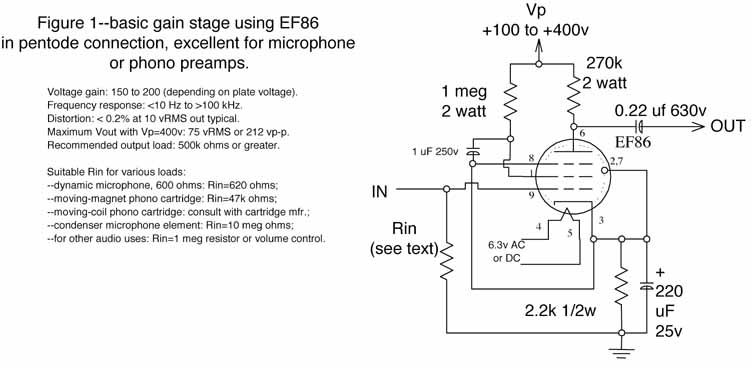
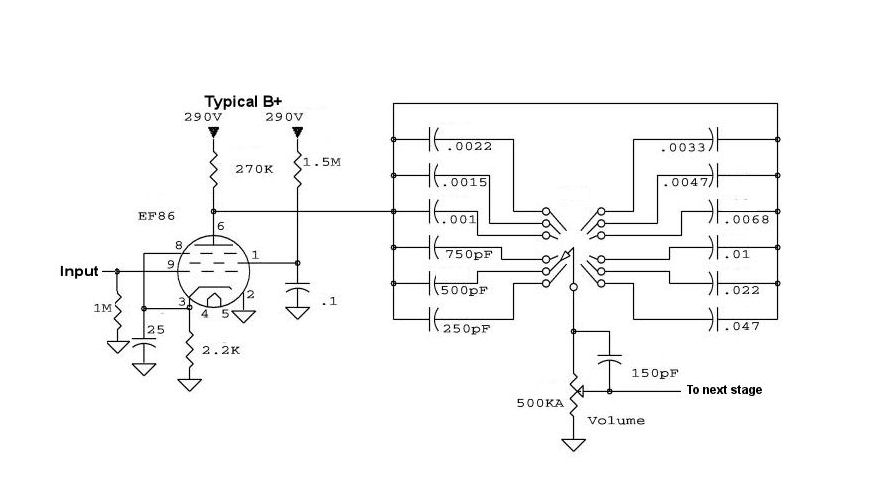
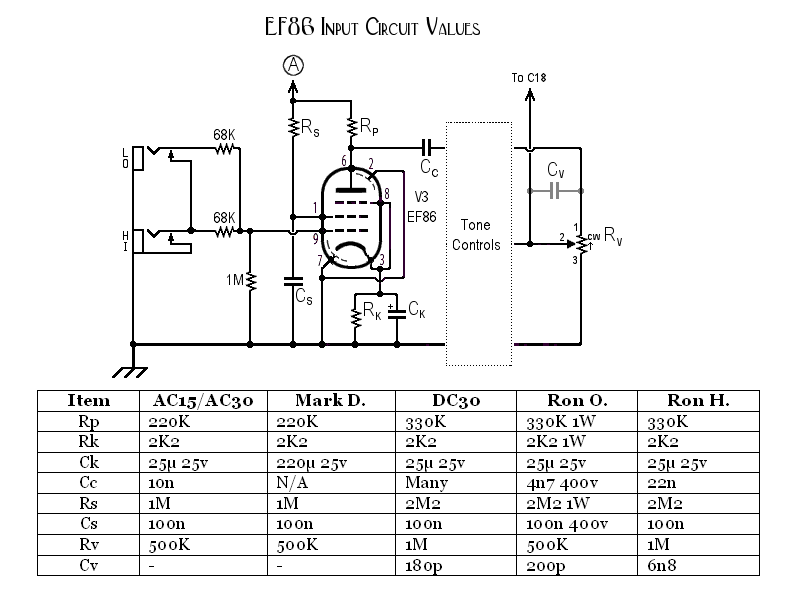
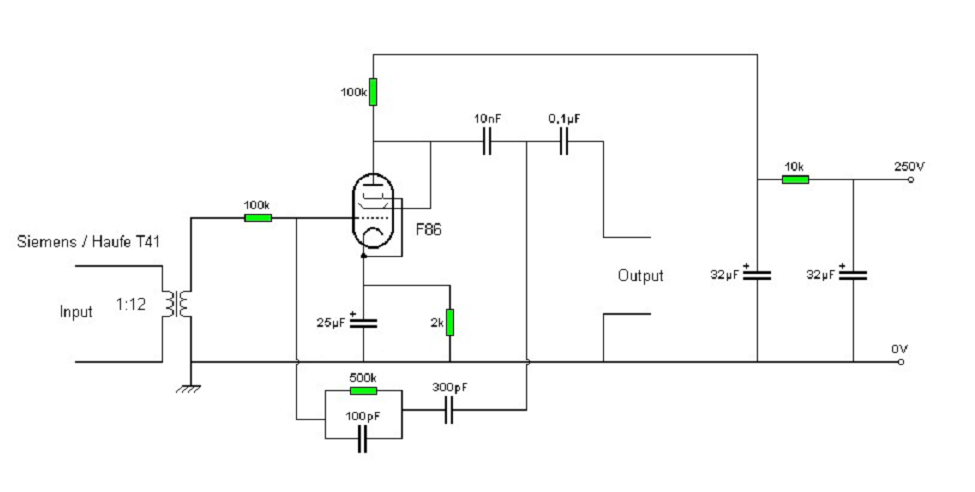

xxxxxxxxxxxxxxxxxxxxxxxxxxxxxxxxxxxxxxxxxxxxxxx